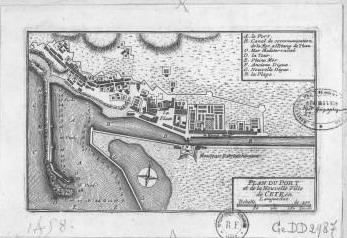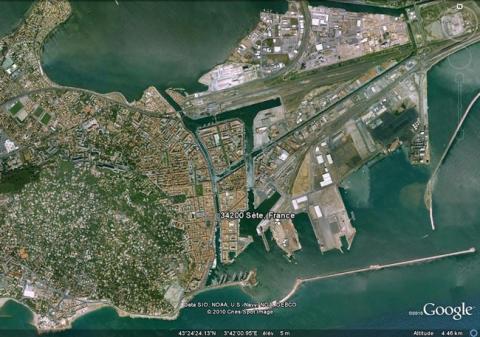Sète
History and description
A site occupied since the Antiquity, Sète only became a significant port from 1666 with the creation of the port of Louis XIV. The site did not have fortifications right from the start. It was not until 1686 that Vauban designed a project for Sète. This involved upgrading the port, which had suffered from silting. Following his death and following an English attack, the engineer Niquet created a battery on the site of the current fort Saint-Pierre.It was not until the 18th century that new defences were constructed at the port of Sète. The engineer Mareschal constructed two forts : Richelieu and Saint-Pierre, on the flanks of the colline Sainte-Claire (Saint-Claire hill), bordering the entrance of the channel of the port of Sète. The two forts could provide crossfire to ensure mutual protection. The fort Saint-Pierre replaced the battery of Niquet. It was an irregular hexagon, built on seven platforms set in an amphitheatre facing the sea. The central platforms held the military buildings, the other supported the artillery installations. Four barbette batteries covered the whole area of the port. The fort Richelieu included three terraces, set in separate wing-shaped structures. At the centre, the nerve core comprised a platform supporting the main artillery battery, facing the sea, behind which the barracks were located. On the hillside, a protruding section in the form of a ravelin covered the structures of the fort and housed a powder keg. The batteries located on the wings ensured coastal projection to the west and east as well as that of the fort Saint-Pierre on a lower level. Arrow slits were installed on the flanks for musket fire and the barracks were equipped with vaulted chambers as an experimental move. Commencing in 1743, the construction was completed three years later. A third fort, higher up on the Sainte-Claire hill, was not built.
Current state
The forts of Sète still exist. The fort Richelieu is the best preserved. Only the storeys of the barracks were eliminated during an allied bombardment in August 1944. Property of the French navy, it is only accessible on Heritage Days. The fort Saint-Pierre was largely destroyed during the battle for the liberation of Sète. The only surviving remnant is part of the urban wall on the south side. The curtain walls of the north and the barracks were destroyed after German mining. Partially restored, it houses now an open air theatre: le théâtre de la Mer (the theatre of the Sea).
Sète
Sète
43° 24' 19" N, 3° 41' 51" E

